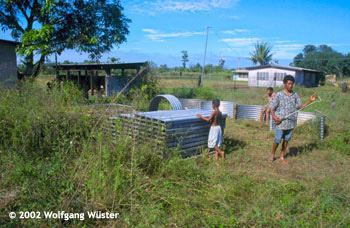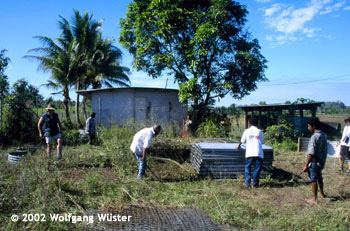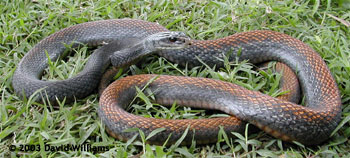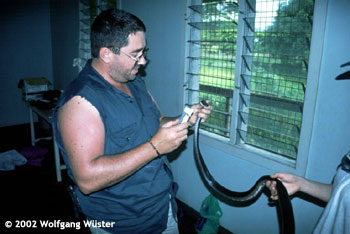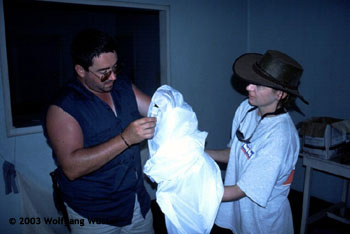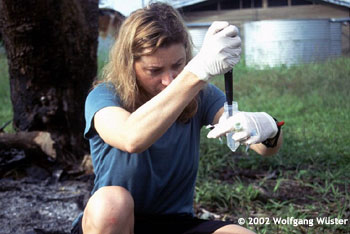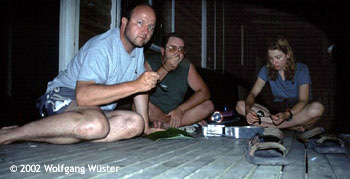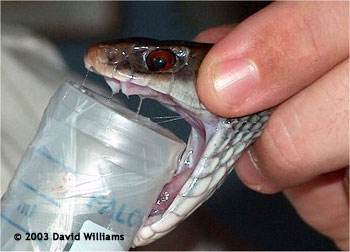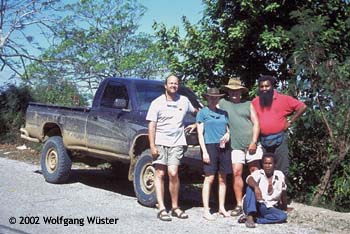
Local women on the way to work in the garden walk along a track through towering kunai and spear grass.
Taipan Territory
Taipans absolutely thrive in the lowlands of southern Papua New Guinea, and with good reasons ...
Much of the landscape is carpeted with towering grasslands that are both an impenetrable refuge and a living pantry of rodents and small marsupials that make up the diet of these nervous, fast-moving snakes.
The local people carve large tracts out amid these grasslands for use as garden areas, and since the use of herbicides and pesticides is unheard of, rodent populations are huge. Garden beds are honeycombed with rat and mouse burrows, and lots of taipans live in these ready-made shelters, gorging themselves on the furry occupants.
It's just a shame that so many people end up being bitten when they either dig up unsuspecting snakes in the gardens, or encounter them on the narrow paths through the grass.
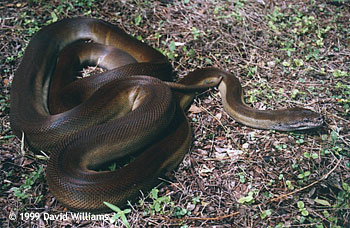
Bikpela Moran tru!
As well as taipans, the towering grasses give shelter to many other species, including this 4.5 metre Papuan python (Apodora papuana) with its two-tone greenish colour scheme.
These snakes grow to more than 5 metres in length, and the largest of them are as formidable as an equivalently-sized African rock python (Python sebae) in terms of temper and strength.
Papuan pythons often frequent animal burrows, and many of the local people fear them as potential man-eaters! Everyone seems to know of a distant cousin, wantok or neighbouring villager who was eaten by one, but properly documented records are yet to turn up.
On the other hand, many, many of these beautiful snakes end up in village cooking fires, and they are surprisingly quite tasty!
